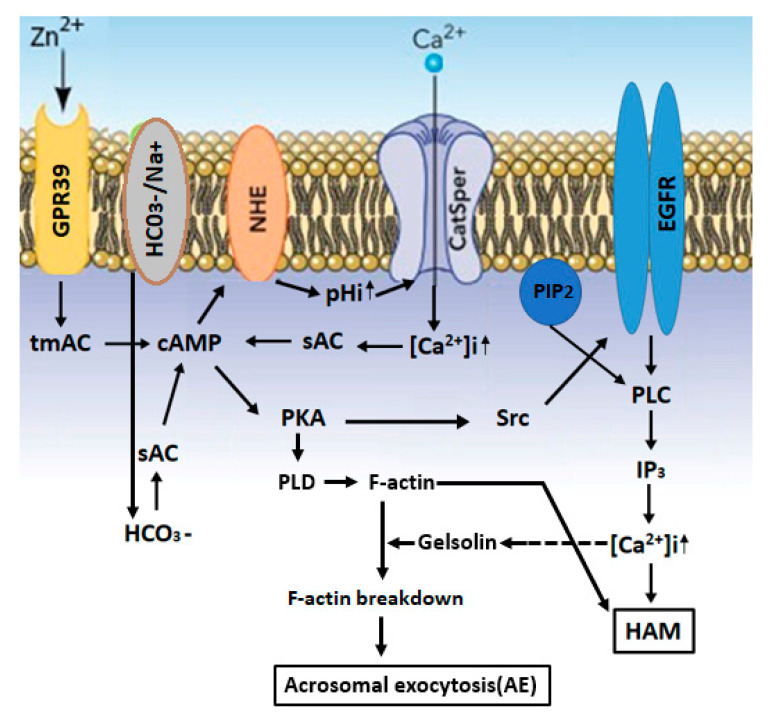Figure 1.
A model describing the mechanisms that mediate the stimulation of hyper-activated motility (HAM) and acrosomal exocytosis (AE) by Zn2+: Zn2+ binds and activates GPR39, which activates the tmAC to catalyze cAMP production. The NHE (Na+/H+-exchanger) is activated by cAMP, leading to increased pHi and the activation of CatSper, resulting in an increase in [Ca2+]i, which, together with HCO3−, activates sAC. The increase in [cAMP]i causes PKA activation, followed by activation of the Src-epidermal growth factor receptor-Pphospholipase C (Src-EGFR-PLC) cascade, resulting in inositol-triphosphate (IP3) production, which mobilizes Ca2+ from the acrosome, causing a further increase in [Ca2+]i and the development of hyper-activated motility. PKA also activates PLD1 leading to F-actin formation during capacitation. Prior to the AE, PLC induces phosphadidylinositol-4,5-bisphosphate (PIP2) hydrolysis, leading to the release of the actin-severing protein gelsolin to the cytosol, which is activated by Ca2+, resulting in F-actin breakdown and acrosomal exocytosis (AE).

